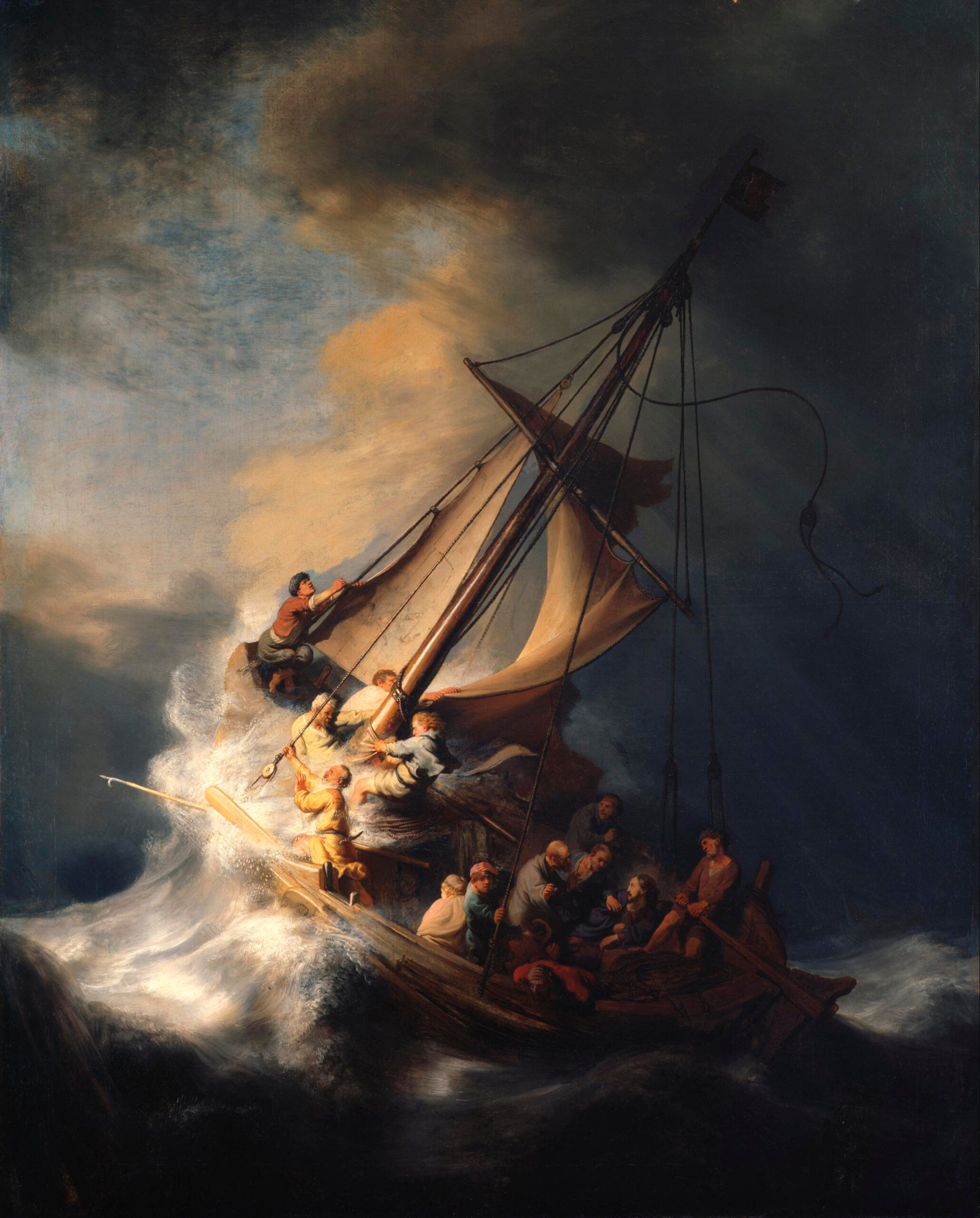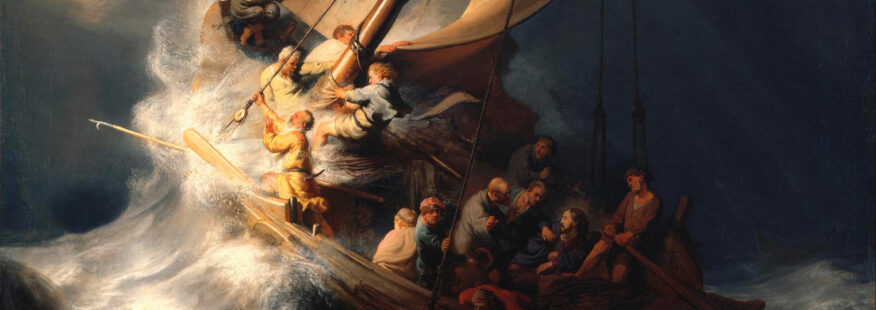Christ in the Storm on the Sea of Galilee
Rembrandt Harmenszoon van Rijn
This spiritual exercise connects the verbal with the visual. Beginning with Origen in the third century, Lectio Divina is an Early Church practice of scriptural reading, meditation and prayer intended to promote communion with God and to increase the knowledge of God's word. Traditionally, Lectio Divina has four separate steps: read (reading the text four times), meditate, pray, and contemplate.
Visio Divina is a form of looking in which we prayerfully invite God to speak to our hearts as we look at an image or a painting. As you gaze, you will be offered some questions for silent reflection, some of which may speak to you, while others you may choose to ignore. At the end of the Visio Divina, you will be invited to share a word or phrase to express your experience of the image.
Let’s start. Take a moment to pause, sit still, and relax. How might God want to speak to you through this passage and painting?
Visio Divina is a form of looking in which we prayerfully invite God to speak to our hearts as we look at an image or a painting. As you gaze, you will be offered some questions for silent reflection, some of which may speak to you, while others you may choose to ignore. At the end of the Visio Divina, you will be invited to share a word or phrase to express your experience of the image.
Let’s start. Take a moment to pause, sit still, and relax. How might God want to speak to you through this passage and painting?
Lectio Divina
Don’t read too fast! Meditate on the passage.
Mark 4:35-41 (ESV)
On that day, when evening had come, he said to them, “Let us go across to the other side.”
And leaving the crowd, they took him with them in the boat, just as he was. And other boats were with him. And a great windstorm arose, and the waves were breaking into the boat, so that the boat was already filling. But he was in the stern, asleep on the cushion.
And they woke him and said to him, “Teacher, do you not care that we are perishing?”
And he awoke and rebuked the wind and said to the sea, “Peace! Be still!”
And the wind ceased, and there was a great calm. He said to them, “Why are you so afraid? Have you still no faith?”
And they were filled with great fear and said to one another, “Who then is this, that even the wind and the sea obey him?”
Pray to quieten yourself and ask for God’s illumination.
And leaving the crowd, they took him with them in the boat, just as he was. And other boats were with him. And a great windstorm arose, and the waves were breaking into the boat, so that the boat was already filling. But he was in the stern, asleep on the cushion.
And they woke him and said to him, “Teacher, do you not care that we are perishing?”
And he awoke and rebuked the wind and said to the sea, “Peace! Be still!”
And the wind ceased, and there was a great calm. He said to them, “Why are you so afraid? Have you still no faith?”
And they were filled with great fear and said to one another, “Who then is this, that even the wind and the sea obey him?”
Pray to quieten yourself and ask for God’s illumination.
- Lectio (read) – Read the text for the first time. Gently listen; don’t force it. To what is God drawing your attention?
- Meditatio (reflect) – Read the text for a second time: This is not a study. Pay attention to what God pointed out and reflect further. Does a word or phrase come to mind?
- Oratio (respond) – Read the text for a third time. Respond with short thoughts you want to capture. Write down your thoughts in a journal or notebook.
- Contemplatio (rest) – Read the text for a fourth time. This is not prayer or meditation but rather a chance to sit quietly and let God work.
Visio Divina
‘Don’t Look too fast! Gaze upon the image.

Rembrandt Harmenszoon van Rijn, “Christ in the Storm on the Sea of Galilee”, 1633, oil on canvas, 160 cm × 128 cm (62.99 in × 50.39 in). This painting is still missing after the 1990 robbery from the Isabella Stewart Gardner Museum in Boston, MA, USA.
About the painter
Rembrandt Harmenszoon van Rijn (1606–1669) was a Dutch draughtsman, painter, and printmaker. An innovative and prolific master in three media, he is generally considered one of the greatest visual artists in the history of art and the most important in Dutch art history.
Questions
- Look at the image in an intentional way. Don’t over analyze. Simply allow your vision to rest with the image. What parts of the image visually jump out at you?
- What thoughts or emotions are emerging from the image? Write down single words or short phrases which reflect your response, not whole explanations. There is no insignificant discovery.
- Slowly, count the characters. Why did the artist paint this number of people?
- What are the characters doing?
- Who do you see that you wouldn’t expect to see? Who is in the cabin?
- Which character in the boat do you most identify with? As you continue in an attitude of prayer, what is the Holy Spirit speaking to your heart? What emotions, desires and longings are evoked?
- What is your response to what the Holy Spirit has been revealing? Is there something you would like to share with others?
- Take the time to respond to God in gratitude, supplication, wonder, lament, confession, and praise. What do you need to remember?
- Bring your prayer to a close by resting in God's grace and love.

